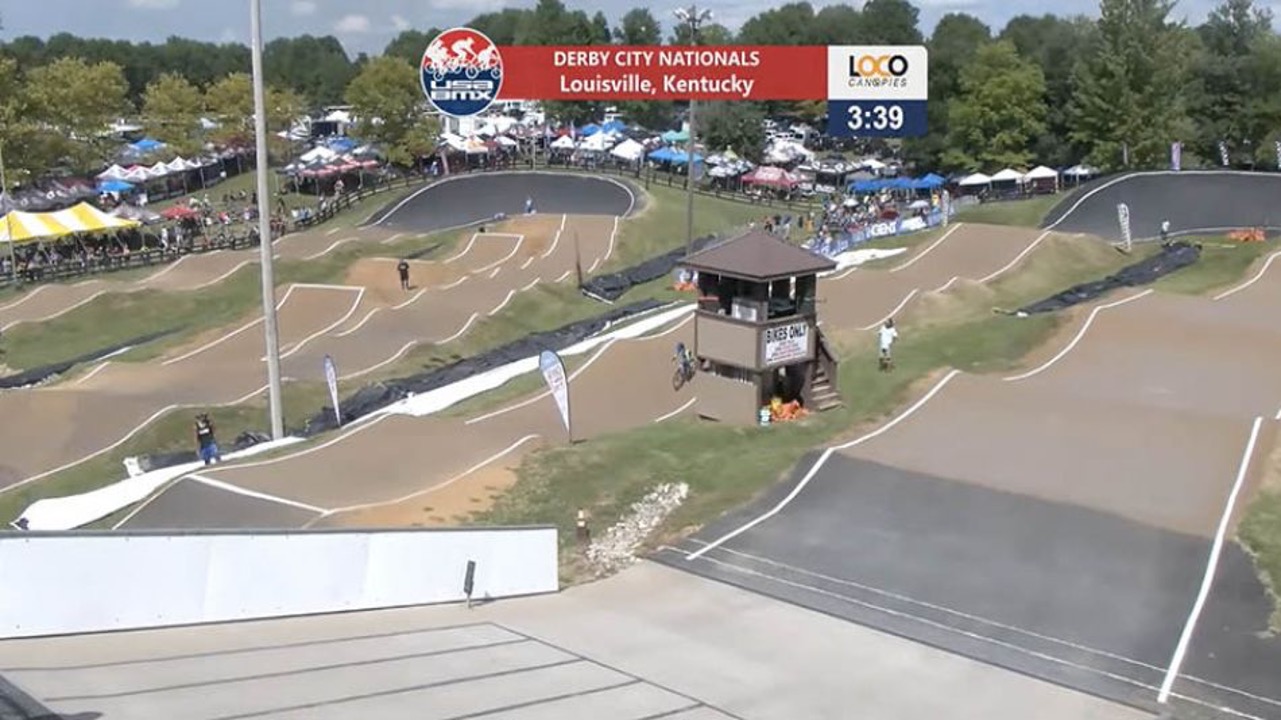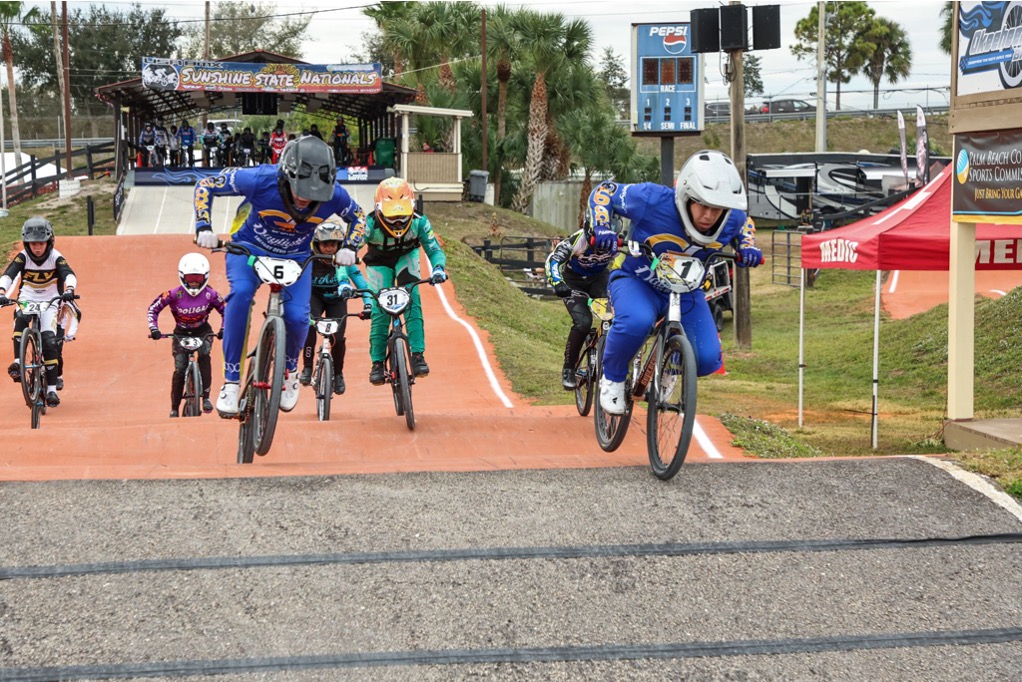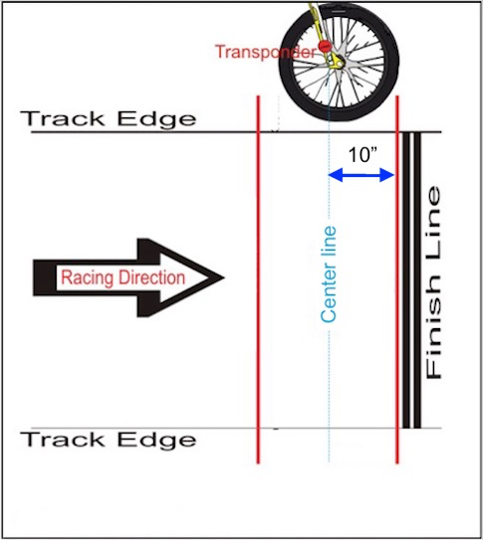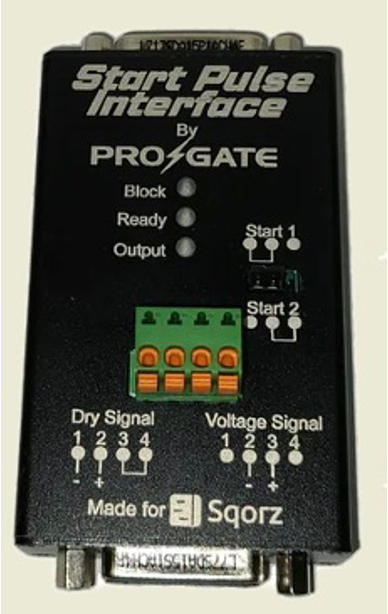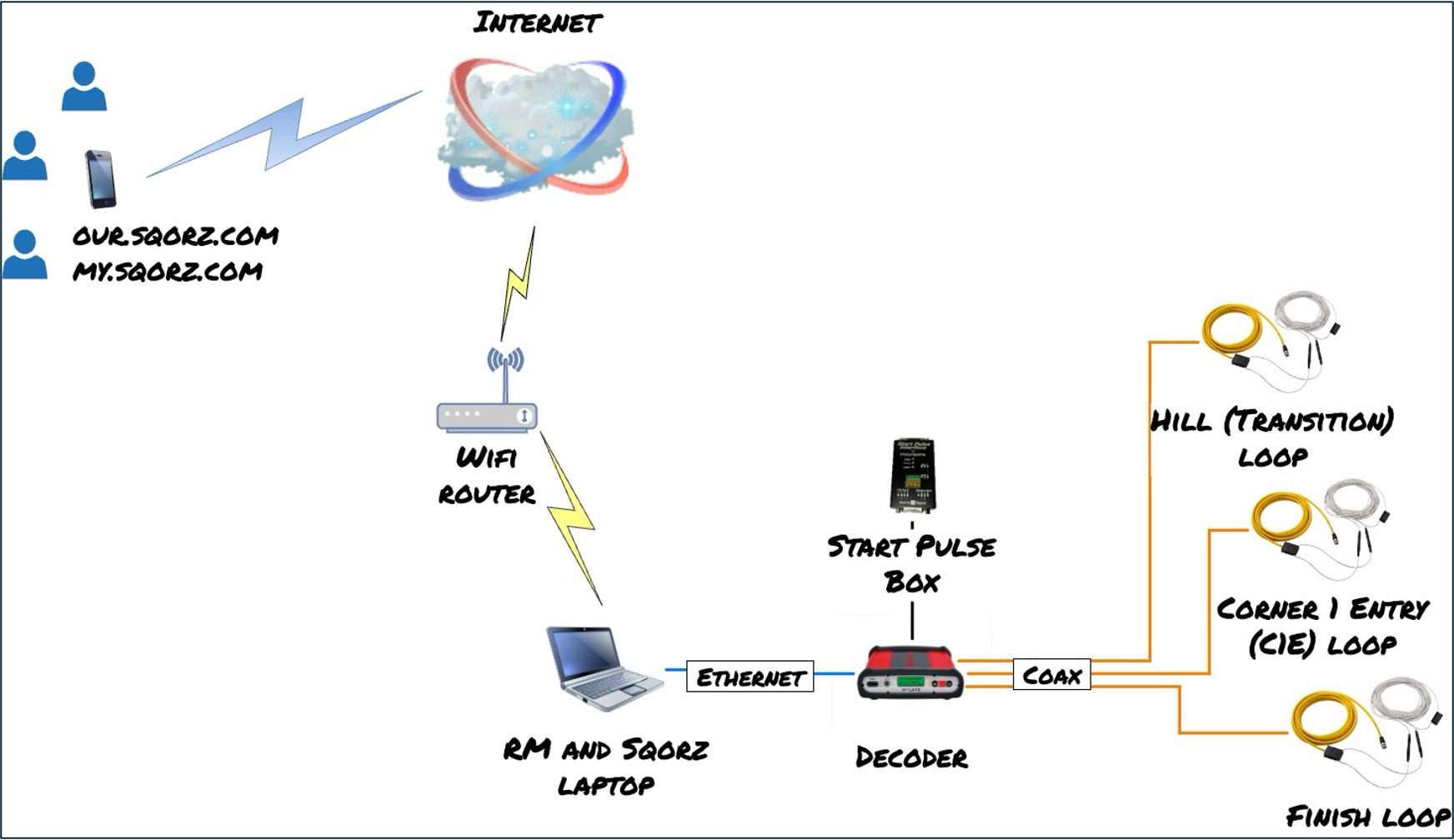Planning a Standard BMX Timing System Installation USA Tracks
Preamble
BMX timing system installations differ from track to track depending on a number of factors:
- Requirements
- Budget
- Physical layout of the track
- Location of the registration / administration office
There are a number of Best Practices that have been established based on considerable experience in timing system installations globally. Be prepared to have an open mind, the installation is an investment in time and money and will be around for a long time. Getting it right now will pay dividends in the future.
Take the time to investigate timing system installations in other tracks, look at what they did and why. Don’t just follow USABMX, their installations are for racing on the national circuit and do not take into account gate practice, training etc.
Skill sets required
There are three main skills required for the design, planning, installation and operation of a timing system. It is very possible that one person can cover all these or maybe two or three people are required each with specific knowledge/experience.
The three areas are:
- Track: timing loop installation, running cables, digging trenches, laying conduit.
- Software: Race Manager and Sqorz operation.
- Network: Connection of computers, decoder, provision of Internet, use of Wi-Fi (Intranet) for results distribution to large screens and tablets for coaches.
Timing loop location
For a standard installation three timing loops are necessary at a minimum:
- Transition (bottom of the start hill)
- Entrance to the first corner (C1E)
- Finish line
The start signal it taken from the gate starting box when the gate drops.
Note
Times from one track are not comparable to times at any other track, there are too many variables involved. It’s important to setup the timing loop to provide the best feedback for the riders at your own track
Loop 1 — Transition (Bottom of the start hill)
If the start hill is longer than 30ft it is recommended that timing loops are placed at the bottom of the hill.
If the 30ft line is actually at the bottom of the start hill then go there.
If the hill is short and the 30ft line extends beyond the hill then go to the 30ft line.
Loop 2 — Entrance to the first corner (C1E)
The best location for the 1st corner timing loop is at the Entrance to the first corner and not the exit. There are a number of reasons for this:
- First straight time is arguably the most important training time on the track.
- Riders will drag race down the first straight all day long.
- During gate practice and training most riders back-off in the first corner so a loop at the exit rarely gets used
- The ‘holeshot’ is a promotional concept used during racing to give prizes to riders and promote companies / brands. It’s not really a useful time for practice / training. Holeshot awards are not based on time and can be manually awarded.
Loop 3 — Finish line
The most important concept is that the finish line is not in the middle of the loop, rather it is at the far edge, see image below.
Specifically the centre of the timing loop is 10" in front of the finish line.
- The finish is when when the tire hits the leading edge of the finish line
- Time is taken when the transponder is in the center of the loop
Put those 2 things together … - The loop is located in front of the finish line so that when the front of the tire is - In line with the finish line the transponder is in the center of the loop - In other words — the center of the loop is 10” in front of the finish line
Decoder location
The decoder takes the transponder signal, adds a timestamp and send the data to Sqorz software running on a computer. Each of the timing loops is connected to the decoder by a coax cable. Ideally the decoder would be located in a registration building close to the track. If this is not possible the decoder may be placed in a clean, dry place closer to the track, options may include the commentary tower or the air compressor building.
Start Pulse Interface
The start pulse interface is required to take the signal when the gate drops and send it to the decoder. The interface boxes are made by Justin Miller from ProGate and they work with any gate controller including Cartessa and ProStart.
Coax cable
Once the timing loop locations and the decoder locations have been determined the next step is to measure the coax cable run between the timing loops and the decoder.
Schematics
Basic layout
- All loops run back to the decoder
- The Start pulse box connects to the decoder
- The decoder connects to the laptop with an ethernet cable
- Internet access is provided by a wifi dongle
- Race Manager and Sqorz run on the same computer
Recommended layout
- All loops run back to the decoder
- The Start pulse box connects to the decoder
- The decoder connects to a switch or router with an ethernet cable
- Internet access is to the router
- Race Manager and Sqorz run on different computers
- Monitors are connected to the Sqorz computer
- Coach iPad is connected to the wireless router


